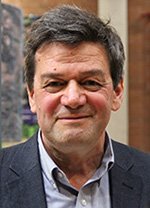Skeletal Muscles as Prototypes of Active Materials of the Future
Lev Truskinovsky
ESPCI Paris, Paris Institute of Science and Technology
ABSTRACT: Considerable attention is now focused on the study of the mechanical behavior of muscle tissues viewed as prototypes of new materials that can actively generate stresses and adjust their rheology. The intriguing mechanical properties of such systems can be linked to hierarchical internal architecture reminiscent more of structures and mechanisms than of a homogeneous matter. To complicate matters further, in addition to external loading, muscle tissues are driven internally by endogenous mechanisms supplying energy and maintaining non-equilibrium.Truskinovsky reviews the main mechanisms of force generation in muscles and shows, in particular, that to generate substantial force, individual contractile elements must act collectively and that a factor responsible for the cooperativity is the dominance of parallel connections exemplified by elastic backbones. An important feature of such systems is the negative stiffness which brings muscle tissues into the class of meta-materials. In addition, muscles can actively tune their rigidity toward a critical state where correlation length diverges. The proximity to the critical point allows muscle tissue to amplify interactions and achieve considerable robustness in front of random perturbations. The mastery of muscle machinery is a crucial step in the bio-mimetic design of modular meta-structures endowed with active mechanical properties.
